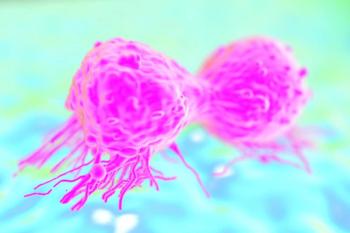
- Oncology Vol 28 No 1S
- Volume 28
- Issue 1S
(P084) Prostate Volume > 60 Ml Increases Risk of Urinary Retention in Prostate Cancer Patients Undergoing High-Dose-Rate Brachytherapy Monotherapy
The American Brachytherapy Society consensus guidelines state that prostate volume > 50 mL is a relative contraindication to high-dose-rate (HDR) brachytherapy. We reviewed our experience with HDR brachytherapy to determine if prostate volume affected prostate target coverage or the risk of acute urinary toxicity.
Tobin J. Strom, MD, Richard B. Wilder, MD, Daniel C. Fernandez, MD, PhD, Matthew C. Biagioli, MD; H. Lee Moffitt Cancer Center and Research Institute
Introduction: The American Brachytherapy Society consensus guidelines state that prostate volume > 50 mL is a relative contraindication to high-dose-rate (HDR) brachytherapy. We reviewed our experience with HDR brachytherapy to determine if prostate volume affected prostate target coverage or the risk of acute urinary toxicity.
Materials and Methods: Between January 2011 and October 2013, a total of 92 patients with low-risk or favorable intermediate-risk prostate cancer were treated with HDR brachytherapy monotherapy to 2,700–2,800 cGy in two 1,350–1,400-cGy fractions separated by 2–3 weeks. Prostate volumes and dose distributions were calculated based on pretreatment planning computed tomography (CT) scans. No androgen deprivation therapy was administered. Acute urinary toxicities within 30 days of radiation completion were recorded according to the Common Terminology Criteria for Adverse Events version 4 (CTCAE v4).
Results: Median prostate volume was 51 mL (range: 25–129 mL). Twenty-four patients (26%) had a prostate volume > 60 mL. A prostate volume > 60 mL did not significantly affect mean prostate D90 (105.4 ± 1.9 vs 105.0 ± 3.0; P = .43) or V100 (94.8 ± 2.1 vs 94.8 ± 2.8; P = .98). There was no difference in acute grade 2 or greater cystitis (3 of 21 [14%] vs 11 of 57 [19%]; P = .67). However, patients with a prostate size > 60 mL did have a significantly higher rate of acute grade 2 urinary retention (5 of 19 [26%] vs 4 of 64 [6%]; P = .03). On logistic regression multivariable analysis, when accounting for age, clinical T-stage, pretreatment PSA, Gleason score, and pretreatment International Prostate Symptom Score (IPSS), a prostate volume > 60 mL was the only variable significantly associated with grade 2 acute urinary retention (odds ratio [OR] = 4.2; 95% confidence interval [CI], 1.0–17.3; P = .046). No patients had acute grade ≥ 3 urinary toxicities.
Conclusions: A prostate volume > 60 mL did not affect coverage of the prostate, as measured by the D90 or V100. However, a prostate volume > 60 mL increased the relative risk of acute grade 2 urinary retention.
Articles in this issue
Newsletter
Stay up to date on recent advances in the multidisciplinary approach to cancer.

















































































